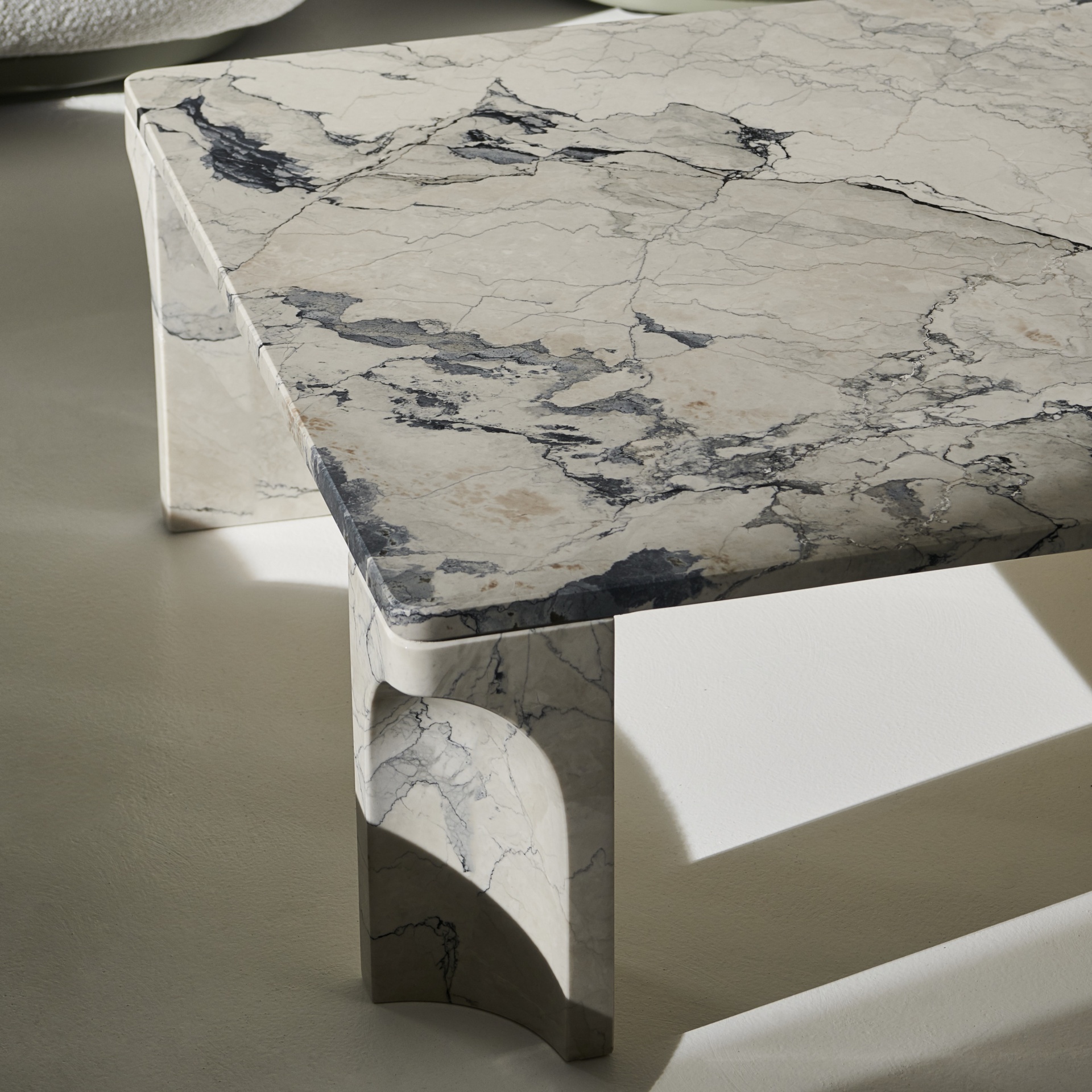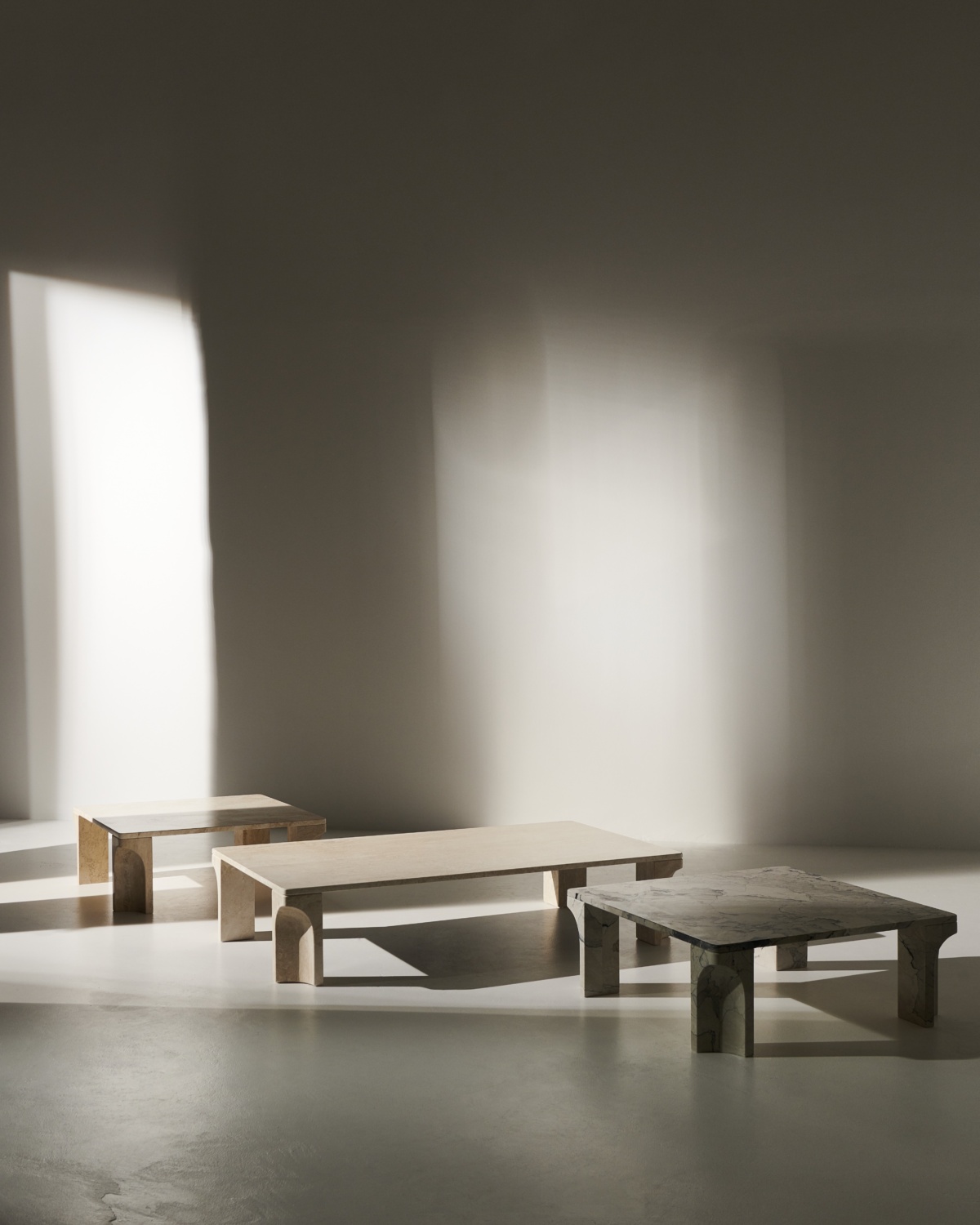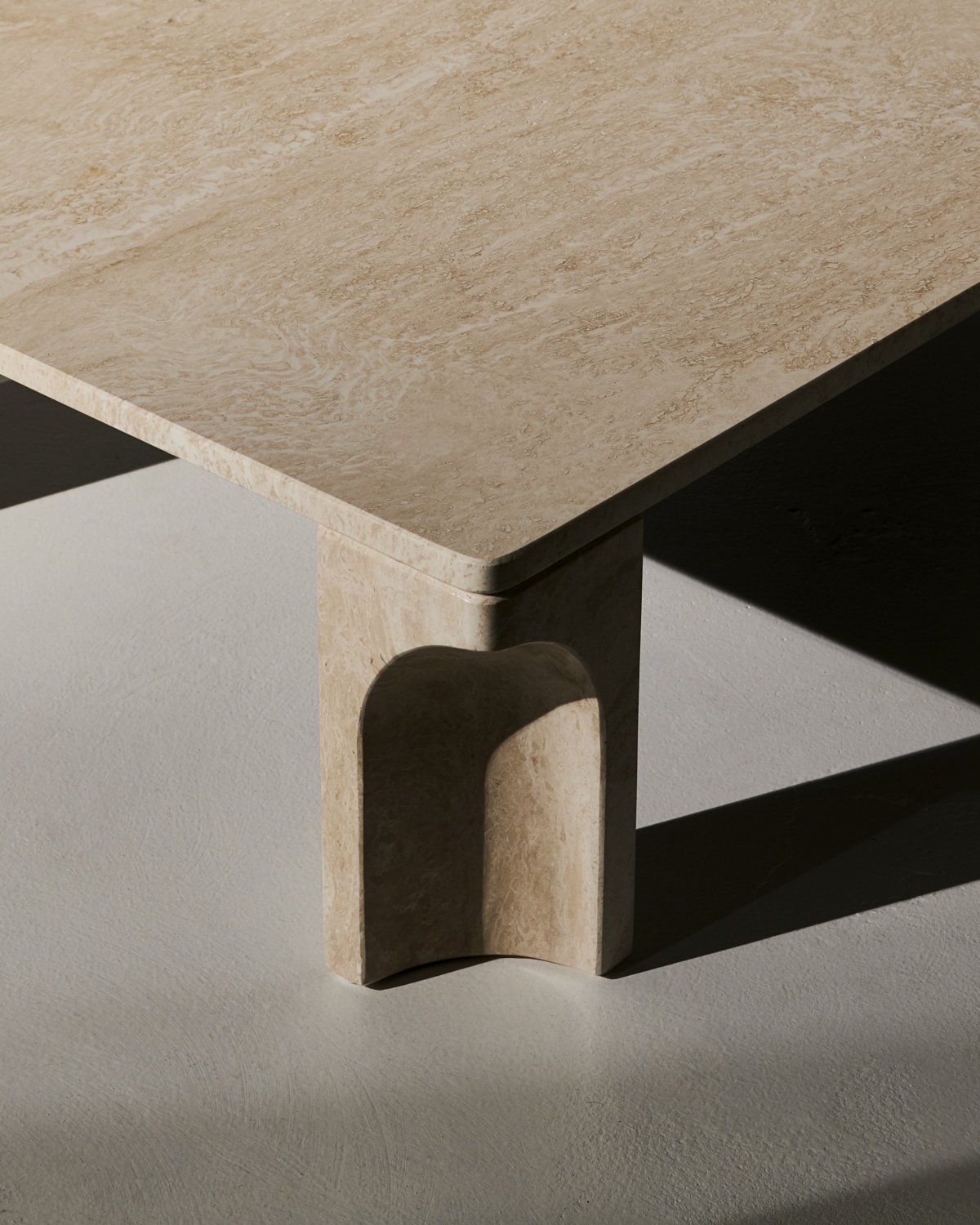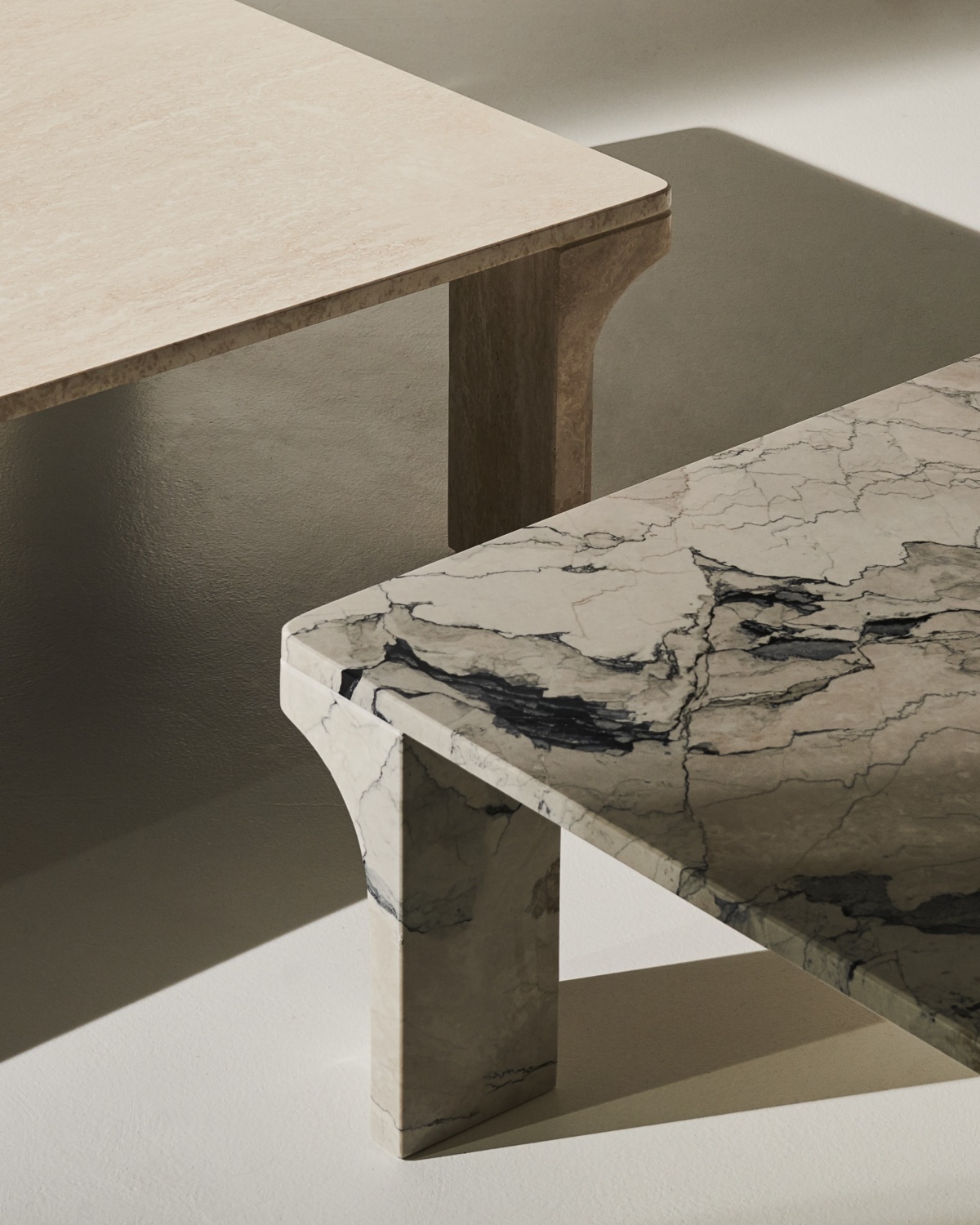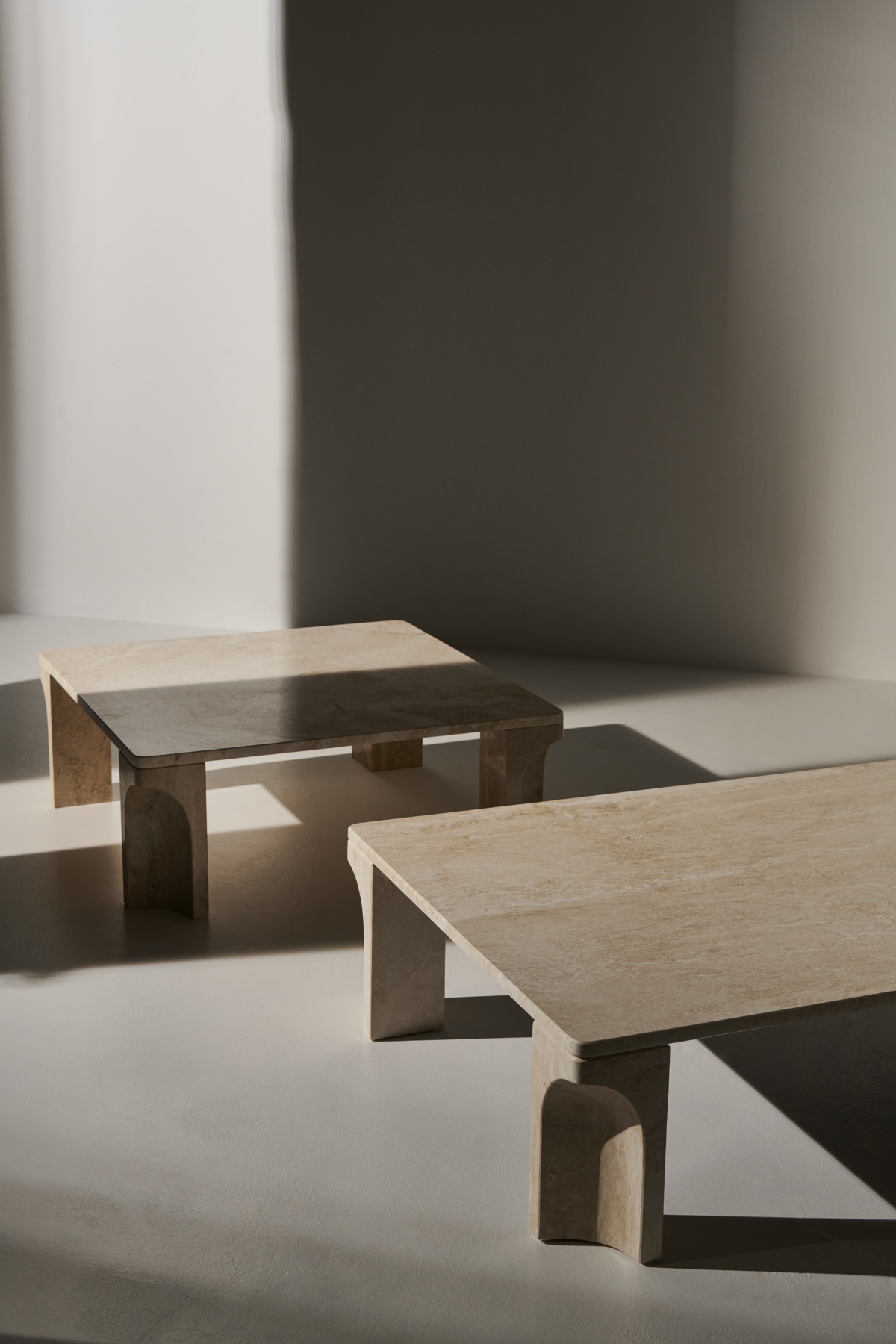“Doric architecture is simple and expressive, characterized by restraint and symmetry, and, of course, the monumental quality of natural stone,” says Italian architect Enrico Fratesi, one-half of GamFratesi.
Enrico and Stine Gam—GamFratesi cofounder and Danish architect—experimented with classical architecture and travertine for their Epic Table as well as the Doric Table, both designs for GUBI. “With the Doric Table we set out to capture these qualities at the domestic scale, taking a specific detail—the fluting that defines the vertical decoration of the Doric column—and recontextualizing and re-proportioning it in a new product,” Enrico says.
GUBI, the international design house founded in the ’60s, is known for its daring and elegant collection of furniture, lighting, and interior objects. Copenhagen-based GamFratesi was founded in 2006 by Enrico and Stine. Their designs fuse old with new, celebrating and experimenting with tradition while using unexpected techniques.
The Doric Coffee Tables take their name from the Doric order of ancient Greek architecture—the oldest and least ornamental of the three Classical orders. Greek and Roman architects discovered carving grooves into the stone gave the pillars a more rounded profile, introducing a sense of rhythm and balance.
“What I love about the Doric Table is that it manages to be elegant and simple while still having the inherent likability that is characteristic of GamFratesi’s designs,” says Marie Kristine Schmidt, chief brand officer for GUBI. “They have a real talent for playing with contrasts, and here they have created a monumental piece that is somehow lightweight and sculptural in its expression.”
The Doric Table is available in two types of natural stone, each with its own color—the travertine version in Neutral White, and limestone in Electric Gray. “Travertine and limestone express unique patterns and grains that form over millions of years. No two surfaces are the same, so no two tables are the same,” Enrico says. “Nature is the third designer in this partnership.”
Stine says working with large slabs of natural stones is challenging, as it’s strong and heavy but can also be fragile when worked on. “It demands a high degree of craftsmanship and precision to achieve the kind of delicacy and balance expressed in the Doric Table, but we have enjoyed taking the time to get to know the material better, learning about its properties and how to get the most out of it.”
She says the final result is the culmination of several design experiments, as GamFratesi sought to answer: What can be achieved by taking away from a material rather than adding to it? And what is the most effective way to bring out the inherent beauty of natural stone?
Enrico says the patterns in the stone surfaces themselves offer glimpses into Earth’s ancient history. “I love the dualities and juxtapositions embedded in the design—ancient architectural detail and modern simplicity of style, human craftsmanship and the inherent beauty of nature.”
- “For us, it’s important that the table has its own distinctive character while still sitting in balance with its surroundings. We chose the two colors with this in mind. The Neutral White in travertine is muted but highly nuanced,” Stine says.
- Enrico says the carved groove of the leg is the defining feature of the Doric design. “It’s a solid stone element that becomes decorative while maintaining a geometric expression. Through an act of material subtraction—the cutting away of the stone as a sculptor might—the table is rigid and formal while also being decorative and soft.”
A version of this article originally appeared in Sixtysix Issue 09 with the headline “GamFratesi.” Subscribe today.
